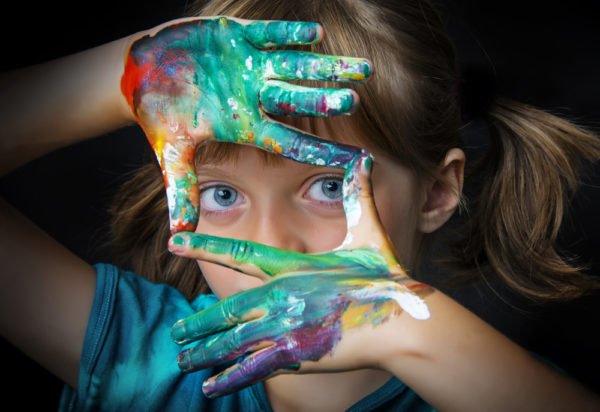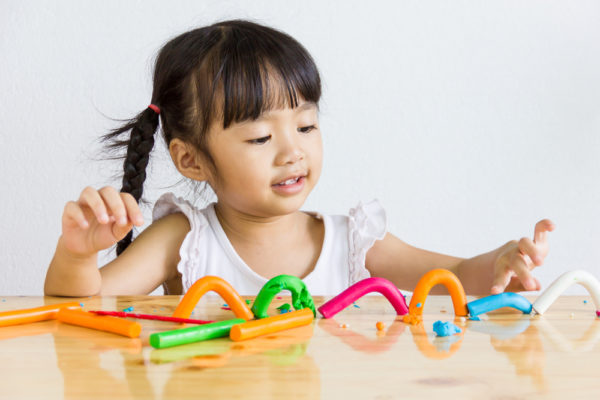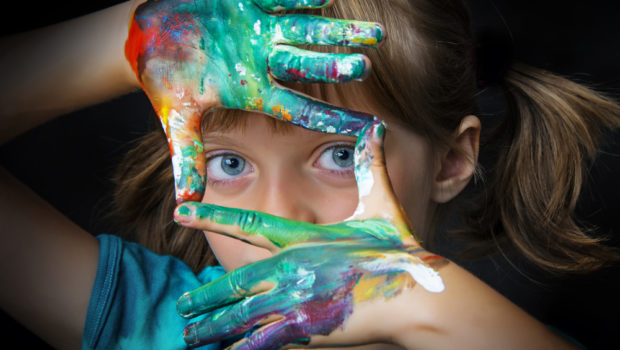7 Ways to Nurture Your Kids’ Creativity at Home
As well as bringing joy and fun to their lives, engaging their creativity allows children to become open-minded individuals and helps them learn to problem-solve in a safe environment. Kids who get creative at home often find it easier to use their imagination and creative skills at school and beyond, but how do you nurture this creativity?

Source: Kuttelvaserova Stuchelova/shutterstock
Keep Creative Resources in the House
You can use just about anything to spark a make-believe game or create some art, but keeping a collection of art supplies in the house from Picasso Art and Craft means your kids can get creative whenever the mood strikes. In addition to paper, paints, markers and glue, add some fun items such as pipe cleaners, buttons, glitter and popsicle sticks to your craft box. Bring out your craft box frequently and let your kids get inspired by the supplies.
Technology can also provide some excellent creative inspiration and crafting ideas. Your computer and printer can play a vital role in arts and crafts time, whether it’s printing off coloring pages or browsing Pinterest for “things to make with a cereal box.” Make sure you always have printer paper and Dell printer ink on hand.
Fun Brain Games
Brain games like scrabble words, crossword puzzles, and words with friends are the most engaging and enjoyable ways to improve your child’s cognitive skills, strengthen their attention power, and process information more quickly. So, taking everything into account, you can gain a better understanding of their strengths and weaknesses.
With the help of these kinds of brain games, children can practice their spelling and read with a game. In the game, words will spell incorrectly and the player must find out how to make it right or move on to the next word.
Play Imaginary Games
Playing imaginary games and creating worlds and stories is a huge part of childhood that is often lost as we get older. This is key to creativity and encouraging your kids to partake in these activities helps them think creatively beyond their youth into adulthood. Make-believe games also allow children to practice organizing their thoughts and develop social and verbal skills.
Make-believe comes naturally to most children, but it’s a quality that’s easily lost if it’s not nurtured, and they often need a little help to get started. You can encourage your child to try role play by:
- When your child is first experimenting with imaginary games, be selective with the types of toys you provide them with. Opt for open-ended toys — toys that can be played with in more than one way — and don’t give them too many at a time.
- Join in with the game rather than just observing. Follow your child’s lead and try not to narrate the game too much yourself.
- Introduce new ideas into your game. For instance, if you’re playing doctor, you could introduce the idea of getting an X-ray.

Source: GUNDAM_Ai/shutterstock
Provide Toys That Encourage Creativity
These days, there are so many toys for children that choosing what to give them can be overwhelming. Different toys perform different functions and stimulate specific areas of your child’s development, and knowing which toys promote creativity is useful.
Open-ended tools are more beneficial for nourishing the imagination. Although toys such as Lego sets that build a particular model are fantastic for developing fine motor skills and the ability to follow instructions, they can be restrictive to creativity. Similarly, it’s sometimes better to stick to soft toys where the child has to use the imagination that comes with the Disney subscription box. For instance, while a toy truck with different buttons that make noises is fun, it doesn’t encourage the child to use their imagination in the same way a simple truck does.
Creativity nurturing toys include:
- Building blocks and Lego
- Playdough
- Dolls, figures and stuffed animals
- Vehicles
- Toy food, dishes and cleaning supplies
- Dress-up costumes
- Puppets
If you want to get extra creative with your kids, you could make toys together and then use them in a make-believe game. Use playdough to make figurines or paper and printer supplies to make puppets, and then invent some fun scenarios to keep your children entertained for hours.
Foster a Relationship with Books
Reading offers tremendous benefits for kids, such as improving linguistics skills, empathy, concentration and, notably, creativity. While television does most of the viewer’s creative work, books stimulate ideas and leave the rest to the imagination.

Source: Africa Studio/shutterstock
To get your kids interested in reading, make books age-appropriate available to your children in your home and involve books and stories into different areas of their lives. Read to them, but also give them time alone to read or flick through picture books. Engaging them in conversation and asking them open-ended questions about what they’re reading also fosters creative thinking.
Don’t Be Afraid of Your Kids Getting Bored
Structured activities and routines promote all kinds of skills and qualities in children, such as discipline, time-keeping and commitment, and help them feel safe and entertained. However, children also need unstructured periods where they use their imagination to create their own fun. Many parents feel it’s their responsibility to keep their child busy, but sometimes kids need a bit of boredom to inspire them to create and think for themselves.
Model Creative Behavior
Kids absorb everything they see. In the same way you model behaviors such as politeness, you should also model getting creative. In addition to doing creative activities in your daily life such as cooking, singing or crafting, get involved with some of their hobbies. Instead of watching them get artistic, paint your own picture or build your own Lego home.
The creative process can be quite scary because things don’t always turn out how you’d like them to, but children need to learn that feeling nervous, and even failing at a task, is all part of life. Whether you are planting a garden, redecorating or baking a cake, let your children into your creative tasks, and let them know how participating in them makes you feel.
Spend Time Outdoors
Getting a change of scene is an excellent way to kick start creativity. Spending time in nature, in your backyard, at a local park, in a forest or on the beach provides opportunities for your kids to discover new things and ask questions. The great outdoors also offers countless materials for using your imagination, from finding shapes in the clouds to building a fort of sticks.
Enjoy Getting Creative Together
Though creativity is a significant part of who we are as humans, it is something that needs to be nurtured and encouraged, particularly in children. Most children are more willing to engage with their imagination and the world of make-believe than adults, but sometimes they need a little push in the right direction. And, you never know! You may enjoy getting creative yourself.
















